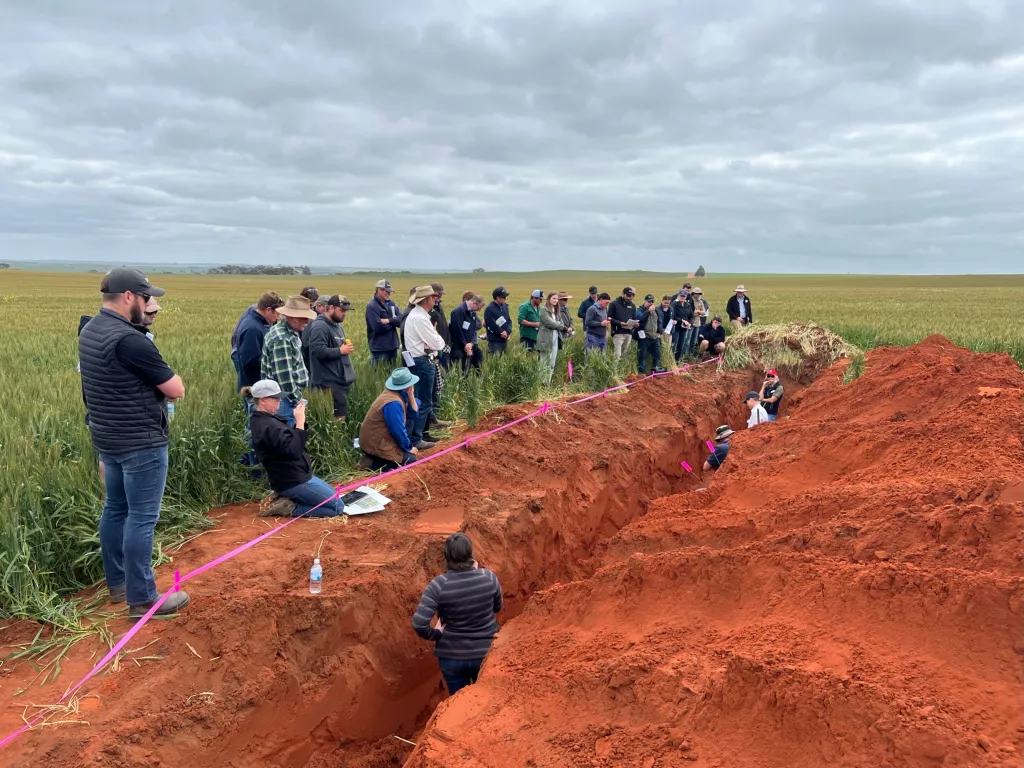Utilising effective stubble management to hold soil moisture in increasing dry seasons
By Kate Parker, WMG Project Officer
It’s no secret that this year has been exceedingly dry, with the average break of the season for the region landing somewhere around late May – early June and the rainfall coming in below long-term average for the first half of the year (Table 1). Dry seasons influence a trend for growers to make moisture conservation a priority as it is easier to keep wet soils wet than try to wet dry soils. Soil moisture is a key factor in plant germination and emergence meaning conservation of that moisture is an important strategy for grain growers to optimise productivity and returns (GRDC).
Table 1. Rainfall recorded in the Barberton area comparing 2024 season to long term average from 1911-2024 (BOM).
| 2024 | 0.0 | 8.0 | 11.4 | 19.2 | 18.8 | 84.8 | 94.6 |
| Long term avg. (1911-2024) | 13.7 | 16.1 | 19.3 | 23.6 | 55.9 | 82.9 | 83.2 |
Soil moisture has the ability to increase crop water use efficiency by 21-31% in an early sowing scenario with a 2-7% reduction in yield for each week that sowing is delayed. After the opening of the flower on most crops, water stored deep in the profile becomes available, this makes this moisture highly valuable due to this period of time being when the crop is most affected by any lack of water. Stored water has been shown to be of high value in drier growing seasons as early crop establishment is particularly important. Retained soil moisture is known to enable earlier seeding and better establishment (GRDC).
There are multiple ways to increase soil water retention of soils, the main two being increasing Soil organic matter and groundcover. Soil organic matter goes through a process of breakdown with invertebrates, fungi and bacteria consuming the organic material and excreting nutrients. These excrements stick to clay surfaces which grow overtime to become soil aggregates. Soil aggregates are the key to moisture retention in soils as these aggregates create gaps between each other to allow water to enter the profile along with pores within the aggregates allowing water to be held onto until the crops require it (UNL).
Groundcover works to increase water infiltration by ‘breaking’ raindrops before they reach the surface of the soil, allowing it to infiltrate through the profile instead of running off with the valuable topsoil. Reduction of runoff is also achieved through groundcover slowing down the flow of water, giving it more time to infiltrate. Another effect is the reduction in evaporation of rainfall as groundcover reduces the amount of sunlight able to get to the soils surface (NSW DPI).

Effective stubble management strategies can benefit both groundcover and soil organic matter levels. Stubble retention maintains groundcover and increases soil organic matter which improves rainfall use efficiency, reduces the risk of soil erosion, increases the volume of plant available soil water, and increases plant ability to access said stored water (DPIRD). Stubble also increases soil moisture retention, particularly in the surface soil pre-sowing and in early crop development. This has been particularly important in increasingly dry years, with stubbles maximising the plant available water for sowing in low to medium rainfall areas (GRDC).
Studies have shown that yield was increased by 0.2t/ha with a retention of 5t/ha of wheat straw residue (GRDC). Research in WA has indicated that a reduction in soil moisture evaporation can be observed at 2.5t/ha stubble and with stubble 4-6t/ha there is an 80% reduction in evaporation compared to bare soil. Even mulched stubbles have been shown to increased stored moisture up to 10% (GRDC).
Although complete stubble retention is shown to have the largest benefit, there are other options that keep the organic matter and groundcover at reasonable levels to prevent moisture loss. Machinery manipulation of stubbles is one of the key focus areas of the WMG Stubble Management Project, and a useful management method when stubble loads are high, such as those following the 2021 and 2022 seasons. Mulching stubble involves breaking the straw into smaller pieces and therefore increasing rate of breakdown; this option is effective for heavy stubble loads and can allow a speedier harvest as you can increase stubble cut height. Shallow incorporation is another option which works by blending the stubble into the top 8cm of soil (aerobic layer), allowing moisture capture and maintaining structure to prevent erosion (GRDC).

Stubble management remains an area of continued consideration for many farming operations, with recommendations and treatment options often changing season to season. As occurrences of dryer seasons continues to increase, it is becoming particularly important to be aware of the different tools and tactics available to combat these challenges. Effective stubble management is one of the main drivers of increased groundcover and soil moisture retention, and one of the key tools that farmers can utilise to combat seasonal variability.














